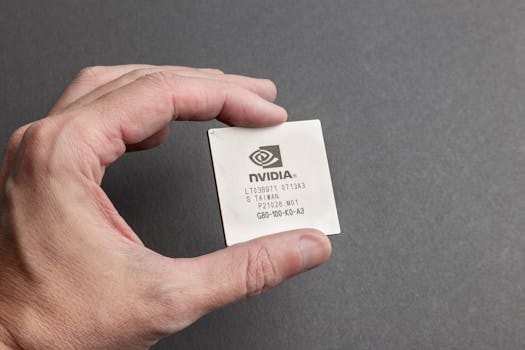
**
OpenAI, the groundbreaking artificial intelligence research company behind the wildly popular ChatGPT and DALL-E 2, is reportedly turning to Google Cloud's Tensor Processing Units (TPUs) to significantly boost its computational power, according to an anonymous source familiar with the matter. This strategic move signifies a major shift for OpenAI, previously reliant on its own infrastructure and Nvidia GPUs, and underscores the growing demand for advanced AI processing capabilities in the rapidly evolving landscape of large language models (LLMs) and generative AI.
OpenAI's Reliance on Google Cloud TPUs: A Game Changer?
The reliance on Google's TPUs marks a significant development in OpenAI's infrastructure strategy. For years, the company had primarily relied on a combination of self-built infrastructure and high-end Nvidia GPUs, known for their superior performance in handling complex AI computations. However, the immense computational demands of training and running increasingly sophisticated models like GPT-4 and future iterations have likely pushed OpenAI to explore alternative, more scalable solutions. Google's TPUs, specifically designed for machine learning workloads, offer a compelling alternative due to their unparalleled performance in specific AI tasks.
This shift hints at several key factors driving OpenAI's decision:
- Scalability: TPUs are renowned for their ability to handle massive datasets and complex computations, making them ideal for training and deploying extremely large language models. The sheer scale of data required for advanced AI models necessitates robust infrastructure capable of handling the processing demands.
- Cost-Effectiveness: While the initial investment in TPUs can be substantial, the long-term cost-effectiveness, especially when dealing with the massive computational needs of large language models, might outweigh the investment in maintaining and expanding a solely self-built infrastructure.
- Specialized Hardware: TPUs are purpose-built for machine learning operations, offering superior performance compared to general-purpose GPUs in specific tasks, leading to faster training times and reduced energy consumption. This is crucial for OpenAI, which is constantly pushing the boundaries of AI capabilities.
The Implications for the AI Landscape
This development has far-reaching implications for the broader AI landscape. It represents a significant validation of Google Cloud's TPU technology and its growing prominence in the AI infrastructure market. It also highlights the increasing interdependence between major players in the AI industry. OpenAI, known for its independent approach, is now leveraging the resources of a major competitor, showcasing the collaborative and competitive nature of the evolving AI ecosystem.
This move could also accelerate OpenAI's innovation cycle. Access to Google's powerful TPUs will enable OpenAI to train even larger and more sophisticated models more efficiently, leading to potentially groundbreaking advancements in areas like natural language processing, image generation, and other AI applications.
Google Cloud's Growing Dominance in AI Infrastructure
This strategic partnership further cements Google Cloud's position as a leading provider of AI infrastructure. Google has invested heavily in developing its TPU technology, and this partnership with OpenAI demonstrates the growing adoption of its specialized hardware among leading AI research companies. The demand for high-performance computing power in the AI sector is skyrocketing, and Google is clearly well-positioned to capitalize on this trend.
This partnership might also lead to increased collaboration between OpenAI and Google, potentially fostering innovation in areas such as AI ethics, model safety, and responsible AI development. The sharing of expertise and resources could accelerate progress in addressing critical challenges associated with the rapid advancement of AI technology.
Keywords and Search Engine Optimization
This strategic alliance between OpenAI and Google Cloud highlights several crucial keywords relevant to search engine optimization (SEO). Incorporating these keywords naturally within the article enhances its visibility on search engines:
- OpenAI
- Google Cloud TPU
- Tensor Processing Units (TPUs)
- Large Language Models (LLMs)
- Generative AI
- AI Infrastructure
- Cloud Computing
- Machine Learning
- Deep Learning
- Nvidia GPUs
- GPT-4
- ChatGPT
- DALL-E 2
- AI Ethics
- Responsible AI
- AI Safety
The Future of AI Infrastructure: Collaboration and Competition
The partnership between OpenAI and Google Cloud signifies a new phase in the evolution of AI infrastructure. While competition remains fierce among major technology companies, strategic collaborations are becoming increasingly important in driving innovation and addressing the challenges associated with building and deploying increasingly complex AI systems. This trend suggests that future advancements in AI will likely be driven by a combination of competition and cooperation, with companies leveraging each other's strengths to accelerate progress in this transformative field.
The move by OpenAI to utilize Google's TPUs is not just a simple technology upgrade; it is a strategic shift with significant implications for the future of AI. It signals a growing trend toward collaboration and the increasing importance of specialized hardware in powering the next generation of AI applications. The coming years will undoubtedly witness further innovation and strategic partnerships in the ever-evolving AI landscape. The race to develop the most efficient and powerful AI infrastructure is on, and the collaboration between OpenAI and Google Cloud is a significant milestone in this ongoing competition.




















